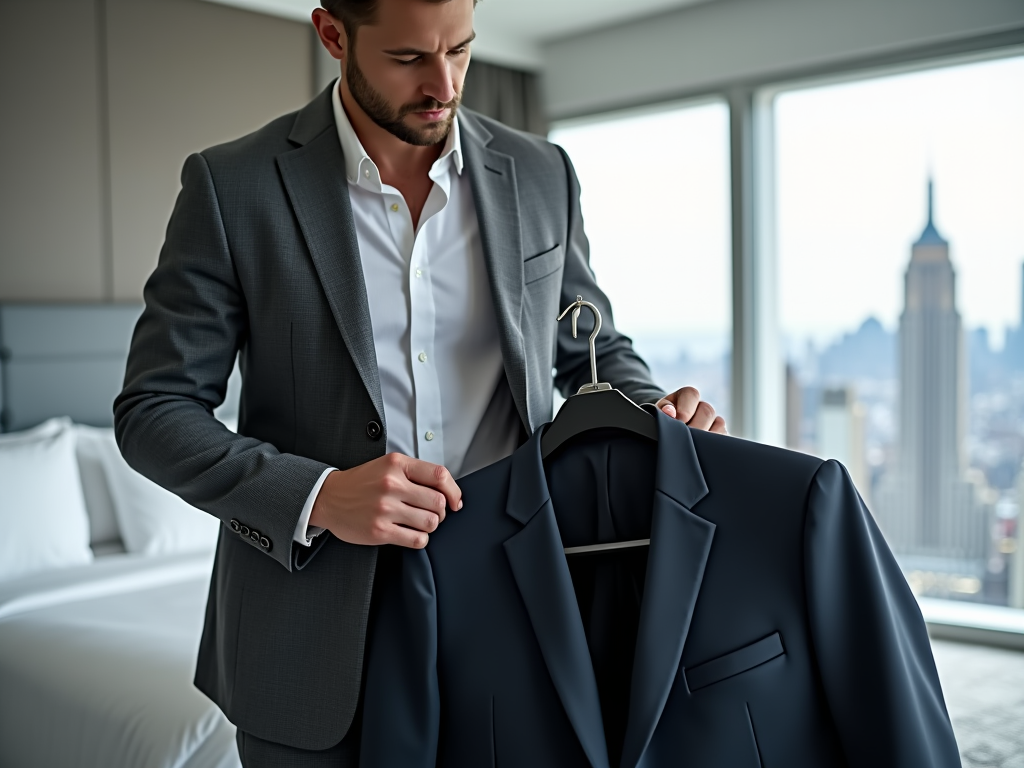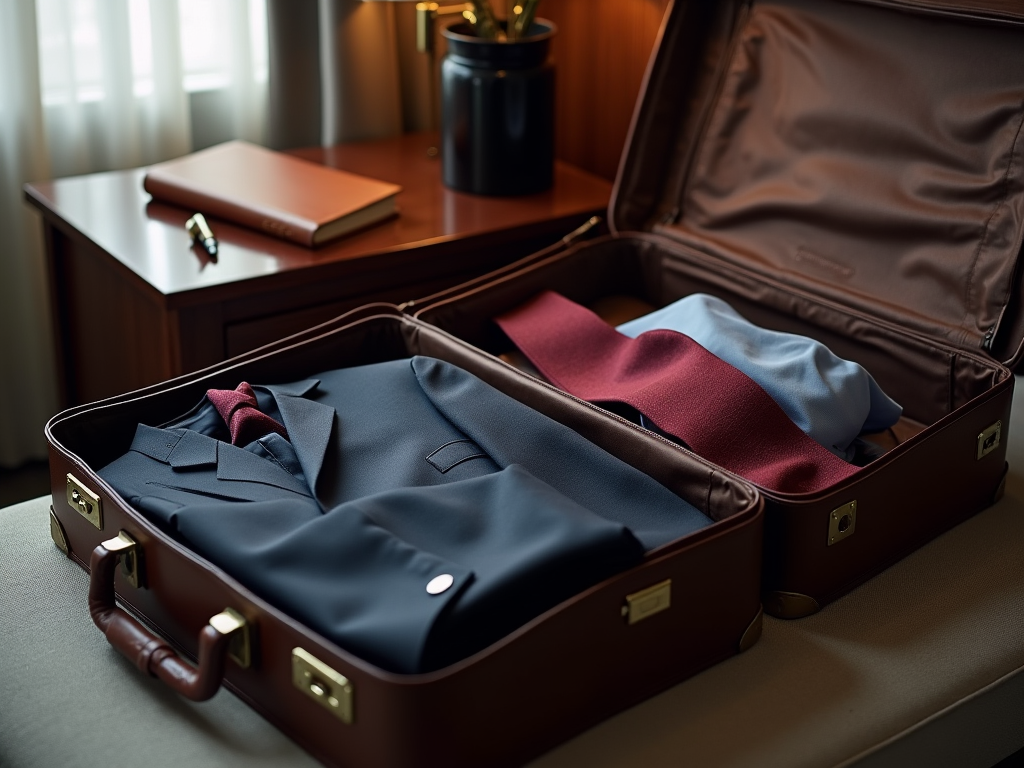
How to Pack a Suit for Travel: 6 Simple Steps
Packing a suit for travel might seem like a daunting task, but with a few simple steps, you can ensure that your suit arrives at your destination in pristine condition. The key lies in folding and arranging it carefully to maintain its shape and avoid wrinkles. In this guide, we’ll walk you through a straightforward process to pack your suit effectively, ensuring it remains ready to wear, whether you’re attending a business meeting or a formal event.
Step 1: Prepare Your Suit Properly

The first step to packing your suit is to make sure it’s clean and pressed. A clean suit not only looks better but also travels better. Ensure that the suit is dry-cleaned at least a day before your trip to remove any odors and stains. By doing so, your suit will be fresh and ready to wear upon arrival. After cleaning, inspect for any damages such as missing buttons or loose threads and fix them in advance.
Next, ensure that accessories like cufflinks, ties, and belts are kept separately. Having these extra elements sorted and kept in a different compartment will save you time and prevent any potential snags or wrinkles happening to the suit fabric. Finally, allow the suit to air out after cleaning, hanging it up for a few hours before you begin the packing process.
Step 2: Fold Your Suit Jacket Correctly

Folding the suit jacket is a critical step in maintaining its shape and minimizing wrinkles. Begin by turning the jacket inside out, placing your hands in the shoulders, and gently pressing them together. This simple technique helps protect the outer fabric. Align the shoulder seams as accurately as possible for symmetry and smoothness.
Once the jacket is inside out, lay it down on a flat surface, and fold it in half vertically, aligning the shoulders. It’s crucial to ensure that the sleeves are tucked nicely into the fold, preventing any creases. By following this method, the jacket encompasses itself, safeguarding the outer material while making it more compact and travel-friendly. A final check to smooth out any remaining bumps guarantees a neat fold.
Step 3: Pack the Suit Trousers
Packing the trousers correctly is essential for avoiding deep creases. Start by laying the trousers out flat on a rigid surface. Fold one leg over the other so they align perfectly. The aim is to maintain the crease down the center of each leg. An accurately folded pair of trousers will align with the crease preserved, preventing bagginess and ensuring a sharp, professional look.
Next, fold the trousers in half once more, this time bringing the hem up towards the waistband. Keep the ironing creases aligned. Place the trousers carefully in your suitcase or garment bag, ensuring they lie flat and undisturbed. This technique not only saves space but also keeps the trousers neat and ready to wear.
Step 4: Use a Garment Bag for Optimal Protection
After folding your suit jacket and trousers, place them in a garment bag for optimal protection. Garment bags are specifically designed to minimize wrinkles and protect your fabric from spills or splashes during travel. Choose a lightweight, durable garment bag that will keep your suit safe while not adding unnecessary bulk to your luggage.
If your travel allows a carry-on, placing the bag on top of other luggage can help prevent compression from other items. Avoid overpacking the garment bag as it can lead to unwanted wrinkling. The bag should rest comfortably without any strain on the zippers or seams. This ensures your suit arrives looking as sharp as it did when packed.
Step 5: Pack Supporting Accessories
While your suit is the centerpiece of your attire, supporting accessories complete the ensemble. It’s equally important to consider how you pack these items. Use a separate pouch or bag to organize small items like cufflinks, tie clips, and watches. Rolling ties instead of folding them prevents creases and helps them maintain their shape.
Keep shoes in shoe bags to prevent them from coming into contact with your garments and causing stains. Place the belts flat or roll them loosely, ensuring they do not press against delicate fabrics. By taking the extra effort to organize your accessories, you’ll not only protect them but also save time when dressing at your destination.
Conclusion
Packing a suit for travel does not have to be an overwhelming process. By following these six simple steps you can ensure that your suit stays pristine and ready for any occasion. Ensuring that you clean and prepare your suit, fold it carefully, and utilize a garment bag for added protection will go a long way in maintaining its appearance. With your supporting accessories thoughtfully packed as well, all that’s left is to focus on your trip rather than worrying about wrinkles or damages.
Frequently Asked Questions
1. Can I pack a suit in a carry-on?
Yes, you can pack a suit in a carry-on if done correctly. Use a garment bag to minimize wrinkles and place it on top of your other belongings in the carry-on for best results.
2. How do I reduce wrinkles when packing a suit?
To reduce wrinkles, always fold the suit jacket inside out and align folds precisely. Using a garment bag and ensuring that you don’t overpack will help maintain the fabric’s integrity.
3. Are there specific garment bags recommended for travel?
Garment bags that are lightweight and provide adequate space without compressing your suit work best. Water-resistant materials add extra protection in case of accidental spills or weather exposure.
4. How can I quickly eliminate wrinkles from my suit after unpacking?
If you notice wrinkles upon arrival, hanging your suit in the bathroom while taking a hot shower can allow steam to naturally loosen the fabric fibers, reducing wrinkles.
5. Is rolling or folding better for packing ties?
Rolling ties is generally better because it prevents harsh creases that can occur from folding and helps to maintain the fabric’s integrity.